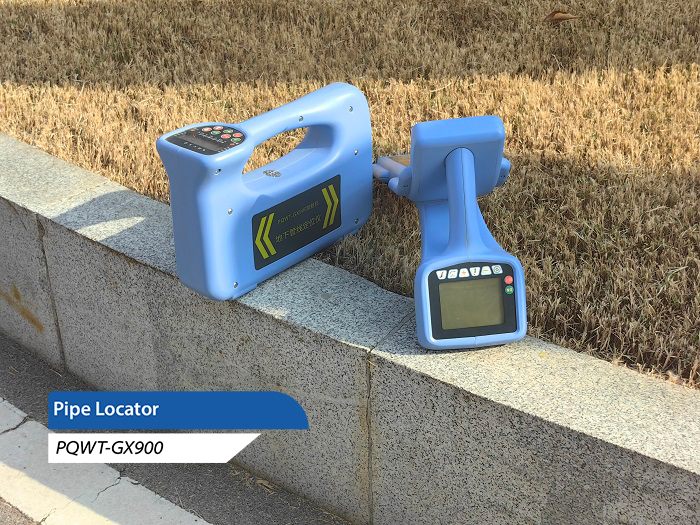Pipe Cable Locator is an important tool for underground pipeline detection, which is widely used in urban planning, building construction, pipeline maintenance and other fields. This article will introduce the basic use of Pipe Cable Locator and answer some common questions to help users better understand and operate this equipment.

The basic use of Pipe Cable Locator
1.Preparation
Ensure that the detector power supply is sufficient, all components are intact.
According to the detection target to choose the appropriate signal frequency and connection method (direct connection method, induction method or clamp method).
2. Apply the signal
If using the direct connection method, connect the output wire of the transmitter to the bare metal part of the target pipe.
If using the inductive or clamp method, ensure that the transmitter is close to the target pipe and that the inductive or clamp position is correctly adjusted.
3. Start Detection
Turn on the receiver and adjust the signal reception frequency to match that of the transmitter.
Scan the area where the target pipeline may pass through, and observe the change of signal strength displayed on the receiver.
4. Positioning and depth measurement
When the signal strength reaches the peak, it is the position of the target pipeline.
Using the direct reading depth measurement function, you can roughly estimate the buried depth of the pipeline. However, it should be noted that the results of direct reading may be affected by a variety of factors, such as soil moisture, signal frequency, etc., and need to be properly corrected.
Frequently Asked Questions
1. How does interference occur during the detection process?
Interference mainly comes from the signal on the target pipeline coupled to the neighboring pipeline through mutual inductance. To avoid interference, it is recommended to use a lower signal frequency and apply the signal by direct connection method.
2. Why are interfering signals detected on other pipelines?
This is because the signal may be coupled to other pipelines through common grounding points or mutual inductance. It is recommended to check the connection method to ensure that the signal is only applied to the target pipeline.
3. How can I verify the accuracy of the peak method of localization using the valley method?
In the absence of interference, the peak and valley positioning positions should coincide. However, in the presence of interference, the two may not coincide. In this case, the positioning point needs to be corrected according to half of the distance between the peak and zero position. If the interference is serious, try to change the signal frequency or connection method to reposition.
4. How to reduce the deformation of the electromagnetic field pattern of the pipeline?
You can try to reduce the transmitter output power, or use direct connection method instead of induction method to apply signal. At the same time, pay attention to avoid locating at the pipeline inflection point, tee, depth change point and other locations.
5. Can Pipe Cable Locator detect fiber optic cables?
The Pipe Cable Locator is mainly suitable for detecting cables with metal sheaths or cores. For fiber optic cables, only fiber optic cables with a metal jacket or a central metal reinforcing core can be detected.
6. Why is the receiver's depth measurement inaccurate?
Inaccurate bathymetry can be caused by a variety of factors, such as soil moisture, signal frequency, and so on. It is recommended to make appropriate corrections according to the direct reading results and try to make the receiver's coil perpendicular to the pipeline's course in order to obtain more accurate readings.
7. What is the maximum distance for using signal tracking fiber optic cable?
Ideally, the maximum distance of signal tracing cable can be more than 80 kilometers. However, the actual distance is affected by a number of factors, such as the continuity of the metal sheath and the short circuit to ground. It is recommended to evaluate the actual application according to the specific situation.
8. What is the reason for the sudden decrease in signal strength?
A sudden loss of signal strength may mean that the line has changed direction or that a T-fork or branch has been encountered. In this case you should stop and check that the current measurement remains unchanged. If the current value suddenly decreases, perform a 360-degree scan to locate other centerlines and verify that the conductor is not branching.








